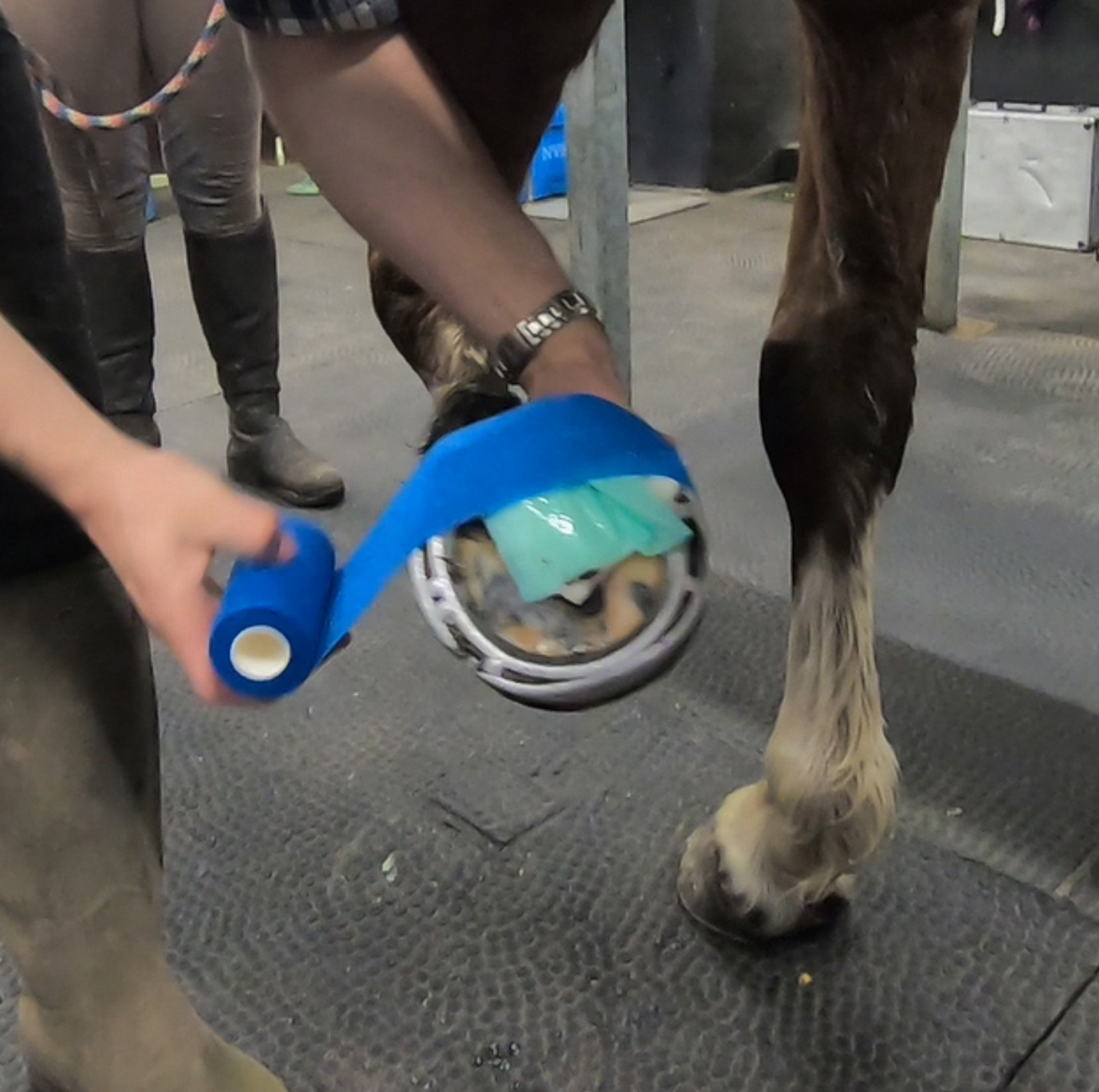Foot abcess
24 Nov 2021
At this time of year, as the ground starts to get wet and muddy, we frequently see foot abscesses as a cause of lameness. An abscess develops when bacteria enter the foot through a hoof crack, up the white line or along the path of a shoe nail, and a pocket of pus develops between the sensitive laminae and the hoof wall or sole. A wet environment softens the foot and makes it easier for bacteria to gain access.
Many horses will show a sudden onset, severe lameness, usually in one leg. They may have a hot hoof and the digital pulse (best found by placing your fingers either side of the back of the fetlock) is usually very strong. In some cases, there may be swelling of the lower limb or pus draining from the coronary band. Your vet will use these signs along with a thorough examination of the foot and the use of hoof testers both to diagnose and locate an abscess.
The only way a foot abscess will resolve is if drainage is created to release the pressure. Some abscesses will rupture on their own, occasionally through the coronary band or heel bulbs, but most will require the foot to be pared with hoof knives and a small hole made for the pus to escape through. The shoe will need to be removed to ensure that this is done thoroughly. Sometimes it is not possible to establish drainage at the first visit, and your vet may instruct you to regularly poultice the foot using warm water in order to soften the hoof horn and encourage the abscess to burst. Poulticing is continued for 5-7 days in all cases to help draw out any remaining pus and protect the defect in the foot. Box rest is recommended at this time to keep the foot dry and lower the risk of the horse pulling the poultice off. Antibiotics are rarely helpful in uncomplicated foot abscesses as they are not good at penetrating the hoof capsule; however they will sometimes be prescribed if a concurrent infection (such as cellulitis) is present or if the vet is concerned that the pedal bone may be involved.
Recurrent foot abscesses can be a sign of an underlying problem, such as chronic laminitis, a growth within the foot called a keratoma or deep infection within the pedal bone. In these cases, the vet may advise xraying the foot so that appropriate treatment can be undertaken. The good news is that these incidences are in the minority, and the majority of foot abscesses we see are straightforward to treat with no lasting effects.

Preventing Foot Abscesses
Good farriery is essential in preventing abscesses from developing in the first place, as cracked or overgrown hooves are much more susceptible. Some horses naturally have poor quality hoof horn and may benefit from a supplement containing biotin, zinc and methionine.
Avoiding long periods spent in very muddy or dirty conditions wherever possible and thoroughly picking out your horses feet as soon as they are brought in from the field will also reduce the risk of an abscess developing.